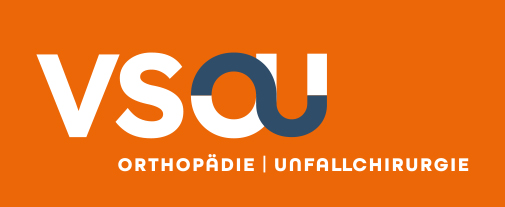Ihre Suche ergab 2 Treffer
Neue Ansätze der Nachbehandlung nach
arthroskopischer Rotatorenmanschettennaht
Zusammenfassung: Die Nachbehandlung nach Rotatorenmanschettennaht wird anhaltend kontrovers diskutiert. Mittlerweile umfasst das in der Literatur beschriebene Spektrum der Nachbehandlung während der ersten sechs Wochen nach arthroskopischer Rotatorenmanschettennaht den Verzicht auf Beübung bei konsequenter Ruhigstellung mit Bandage, die Eigenbeübung durch den Patienten nach Anleitung, die Fremdbeübung durch Physiotherapeuten und die Beübung nur bei positiven Risikofaktoren für eine Schultersteife sowie die traditionelle direkt postoperative passive Beübung. Für jede genannte Variante gibt es bereits Nachuntersuchungen durch zumindest Level-IV-Studien. Ob eine postoperative Ruhigstellung zu einer verbesserten Sehnenheilung führt, muss durch vergleichende Studien geklärt werden.
Abstract: Postoperative treatment concepts after rotator cuff of the shoulder are still discussed controversely. The published concepts of rehabilitation after arthroscopic rotator cuff repair extend from immobilization without any exercising, home-based self-exercising, formal physical therapy to exercising only with positive risk factors for shoulder stiffness and traditional direct postoperative passive exercising. Each variant of postoperative treatment has been evaluated by at least one level IV study. Comparative studies are necessary to evaluate, if tendon healing is improved by strict immobilization.
Retropatellarer Kontaktdruck der nativen Gleitfläche beim bikompartimentalen Kniegelenkersatz
Studienziel: In der vorliegenden experimentellen Studie wurde der Kontaktdruck im retropatellaren Gleitlager beim Oberflächenersatz des Kniegelenks in Abhängigkeit von der sagittalen Position des Tibiaplateaus untersucht.
Material und Methode: Bei 5 Leichenpräparaten erfolgte eine dynamische in-vitro Druckmessung mit dem Tekscan-System (Tekscan, Boston, USA) im retropatellaren Gleitlager nach Oberflächenersatz des Kniegelenks mit der EFK-Prothese (Smith-Nephew) bei nativer Patella. Verglichen wurden unterschiedliche Implantatpositionen des Tibiaplateaus in normaler Position sowie ventral und dorsal positioniert in den Bewegungsausmaßen zwischen 0–120° Flexion. Die Muskelfunktion wurde durch einen Kniegelenkkinemator simuliert.
Ergebnisse: Die kontinuierlichen retropatellaren Druckmessungen zeigten die maximalen Mittelwerte zwischen 90 und 120° Kniegelenkflexion, der maximale Druckanstieg lag zwischen 40 und 90° Flexion.
Schlussfolgerung: Eine ventrale Fehlpositionierung des Tibiaplateaus beim Oberflächenersatz des Kniegelenks sollte aufgrund erhöhter retropatellarer Druckwerte vermieden werden.
Aim: The purpose of the study was the investigation of the contact pressures in the patellofemoral interface with unsurfaced patella in total knee arthroplasty in different positions of the tibial plateau.
Material and methods: In a dynamic in-vivo system (Tekscan, Boston, USA) the contact characteristics of the patella were measured in 5 cadaver knees. The knee joints were replaced with a knee arthroplasty (EFK knee, Smith and Nephew) and the position of the tibial plateau was changed from neutral to ventral and dorsal. Muscle function on the joints were simulated by application of a knee joint kinemator.
Results: Contact pressures of the native patella show a significant increase for a ventral positioning of the tibial plateau in comparison with a dorsal positioning. Measurements were performed between 0–120° of knee flexion and show the highest contact pressures between 90 and 120°.
Conclusions: In total knee replacement a ventral malpositioning of the tibial plateau should be avoided due to an increase of the retropatellar contact pressures.
